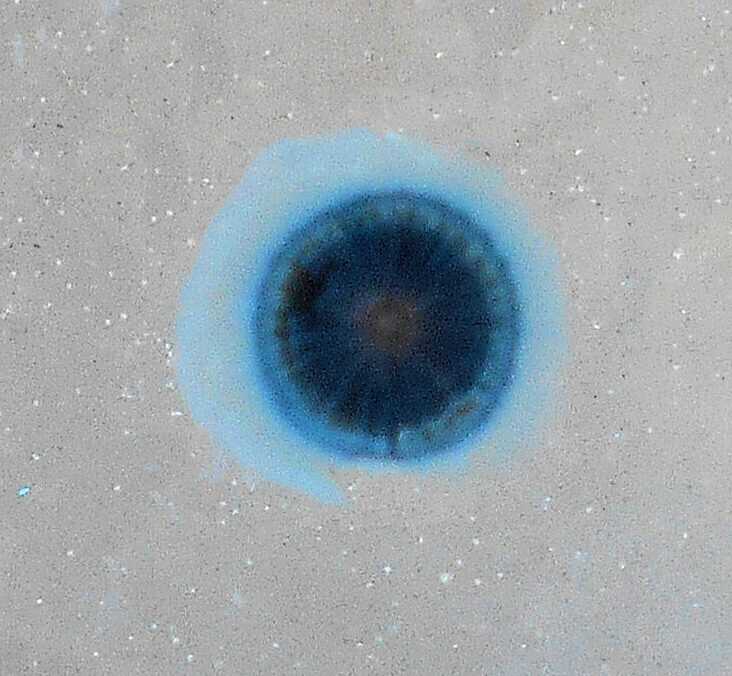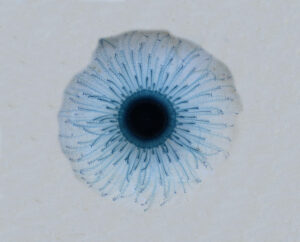Blue Button, Porpita porpita

 Blue Button, Porpita porpita. Collected of the surface by hand off Point Palmilla, Baja California Sur, May 2021. Size: 3.0 cm (1.2 inches) in diameter. Photograph taken at the time of collection with the animal being extremely fragile. Identification reconfirmed by Linsey Sala, Scripps Institution of Oceanography, La Jolla, California. Note: I have collected this species at the same location in May 2019; it appears that show up in local waters in May and then disappear for the rest of the year.
Blue Button, Porpita porpita. Collected of the surface by hand off Point Palmilla, Baja California Sur, May 2021. Size: 3.0 cm (1.2 inches) in diameter. Photograph taken at the time of collection with the animal being extremely fragile. Identification reconfirmed by Linsey Sala, Scripps Institution of Oceanography, La Jolla, California. Note: I have collected this species at the same location in May 2019; it appears that show up in local waters in May and then disappear for the rest of the year.
Phylogeny: The Blue Button, Porpita porpita (Linnaeus, 1758), is a member of the Poritidae Family of Chondorphores, that is known in Mexico as boton azul. Although the blue button is often referred to as a jellyfish, it is actually a colony of small animals known as hydrozoan polyps.
Morphology: The Blue Button has a flattened, round disk that is made up of multiple (up to 100) circular and radiating air chambers. The center of the disk may be golden brown, blue or whitish in color with blue or greenish edges. The tentacles may be blue, turquoise or yellow in color. The disk does not have a sail structure. Blue Buttons reach a maximum of 5.0 cm (2.0 inches) in diameter. Their tentacles are longer than those of the By-the-Wind Sailor, Velella velella, that are equipped with nematocysts (or cnidocysts) that deliver a toxic sting that they utilize to capture prey or repel predators.
Diet: The Blue Button feeds primarily on planktonic larvae and fish eggs. The intermediate ring of tentacles are for reproduction, and the inner tentacles function as both the anus and the mouth. They are poorly studied and very little is known about their behavioral patterns.
Habitat & Distribution: Blue Buttons reside on the surface of the open ocean. The Blue Button is found worldwide, in temperate and tropical seas. In Mexico they are a resident of all coastal waters of the Pacific including throughout the Sea of Cortez.
Ecological Importance: Porpita Porpita belongs to the neustonic, or ocean surface, food web. The sea slugs Glaucus atlanticus and Glaucus marginatus in addition to the sea snails of the Genus Janthina. The Porpita competes with other ocean surface drifters for food. This species is also known to form a participate in commensalism with Carangoides malabaricus, or Malabar trevally. The juvenile Malabar trevally uses the Porpita for shelter.
Synonyms: There are more than thirty synonyms for this species.